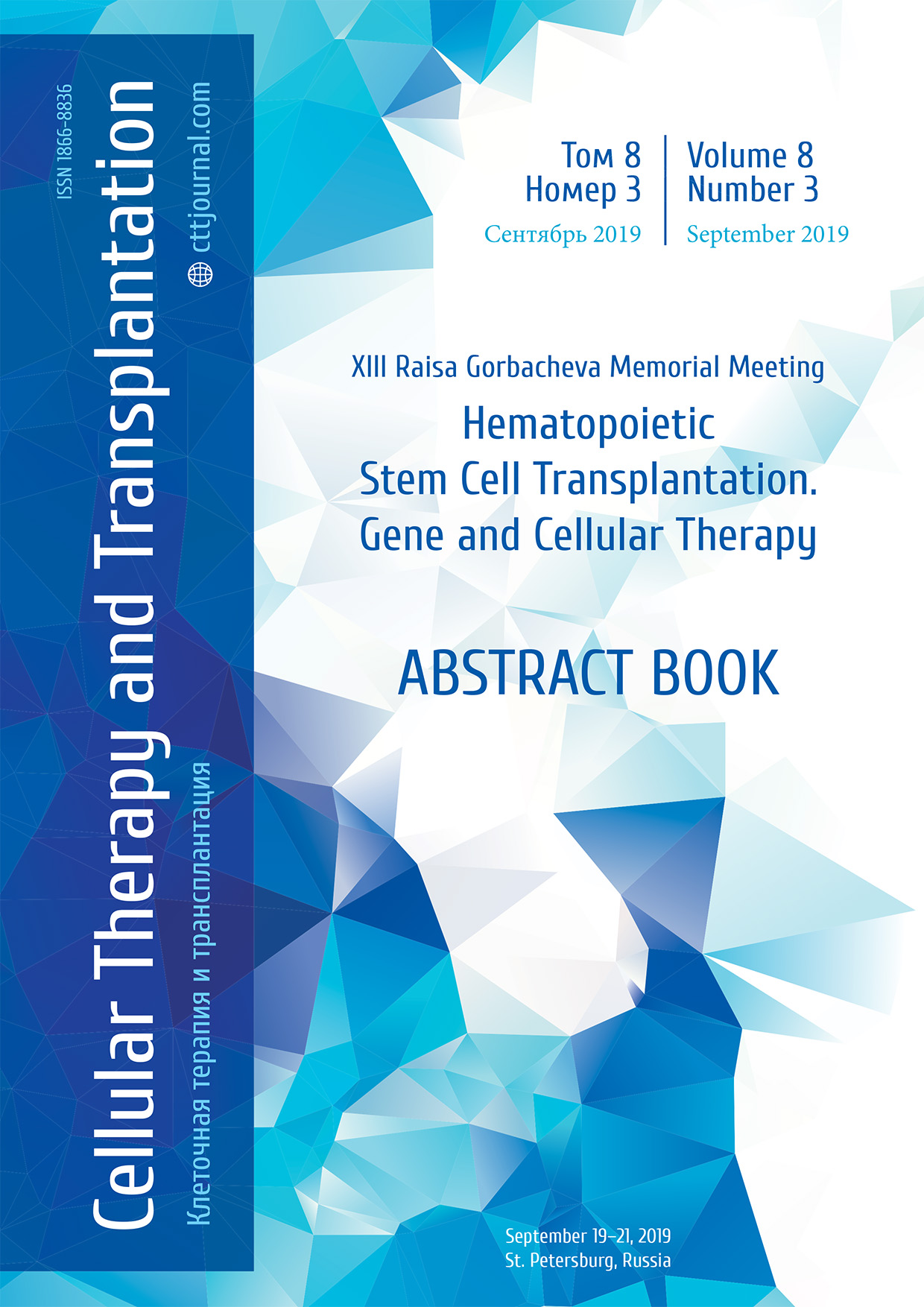A clinical case of the successful use of allogeneic hematopoietic stem cell transplantation as a “salvage treatment” in a patient with multiple myeloma
Valentina V. Porunova, Olga V. Pirogova, Olga V. Kudyasheva, Elena I. Darskaya, Boris V. Afanasyev
Raisa Gorbacheva Memorial Research Institute of Pediatric Oncology, Hematology and Transplantation, Pavlov First Saint Petersburg State Medical University, St. Petersburg, Russia
Contact: Dr. Valentina V. Porunova
E-mail: porunovavv@gmail.com
Summary
Despite recent advances, multiple myeloma remains an incurable disease. Allogeneic hematopoietic stem cell transplantation (allo-HSCT) is considered a potentially curative therapeutic option, but remains controversial, due to a significant toxicity associated with the treatment. With this clinical case, we have demonstrated successful application of this therapeutic approach.
Case description
The 44-year old patient was diagnosed with multiple myeloma in August 2013 on the basis of multiple osteolytic lesions, pathological fractures of ribs, left humerus; monoclonal secretion of IgG/kappa (12 g/L); subtotal bone marrow infiltration by plasma cells (92%). According to international prognostic indices, stage II was confirmed; according to II – ISS, II-R-ISS (del13 by FISH). 1st line therapy: induction treatment, PAВ №5, tandem syngeneic transplantation conditioned by melphalan (160 mg/m2), maintenance therapy (bortezomib). Complete response was achieved, with minimal residual disease (MRD+). In February 2016, the relapse was noted: 11% of plasma cells in the bone marrow, lack of M-protein secretion (transformation into a non-secretory form). 2nd line of therapy was based on lenalidomide/prednisolone. In October 2016, a complete response was observed, MRD (+). In May 2017, the second relapse occured: 18.6% of plasma cells in the bone marrow, the development of new focal lesions, local plasmocytomas (L3, right iliac bone). 3rd line therapy included ixazomib/lenalidomide/ prednisolone, radiation therapy to the plasmocytoma region. This treatment resulted into clinical stabilization (23% of plasma cells in the bone marrow, 50% reduction of plasmocytomas in the right iliac bone and decrease by 25% of L3 plasmocytomas). As a “salvage treatment”, allogeneic HSCT was performed from a full HLA-matched sibling (sister) on 24 January 2019. Clinical condition of the disease was stabilized by this time (28% of plasma cells in the bone marrow). Non-myeloablative conditioning regimen was as follows: fludarabine 30 mg/m2, busulfan 8 mg/kg; GVHD prophylaxis regimen: cyclophosphamide 50 mg/kg D+3, D+4, tacrolimus 0.03 mg/kg, MMF 30 mg/kg. Peripheral blood stem cells were used as a graft source. Engraftment was achieved by the D+19, with 46% of plasma cells in the bone marrow, donor chimerism levels were 60-70%. At D+29, a reduction of plasmacytosis (32%), and chimerism 70-79% were also revealed, as well as deletion of chromosome 13 was found in 15% of cells. Immunomodulating therapy with lenalidomide (5 mg per day) was started with D+32, against the background of continued immunosuppressive therapy with tacrolimus. Complete response was revealed on D+60: decrease of plasma cells to 2%, MRD (-), the absence of del13; donor chimerism of 99%. At D+100, we documented a complete PET-negative response, plasmacytomas were not detectable, and immunosuppressive therapy has been canceled. At the present time, more than 6 months after allo-HSCT, we observe chronic GVHD of the skin (1st stage) which does not require systemic immunosuppressive therapy. The immunomodulating therapy with lenalidomide is continued. The quality of life is good.
Discussion
This clinical case demonstrates successful use of allo-HSCT as a “salvage treatment” in a young patient with relapsed form of multiple myeloma. The use of a non-myeloablative conditioning regimen, GVHD prophylaxis with post-transplant cyclophosphamide, as well as immunomodulatory maintenance therapy with lenalidomide in the early post-transplant period, allowed us to achieve a strict complete response by inducing a graft-versus-myeloma reaction (GVM), and to minimize complications associated with transplantation, while maintaining a good quality of life.
Conclusion
Allo-HSCT can be considered a therapeutic option in young patients with a resistant-relapsing form of the disease, when the risk of progression may outweigh the risks associated with transplantation.
Keywords
Allogeneic hematopoietic stem cell transplantation, multiple myeloma, graft-versus-myeloma effect.


